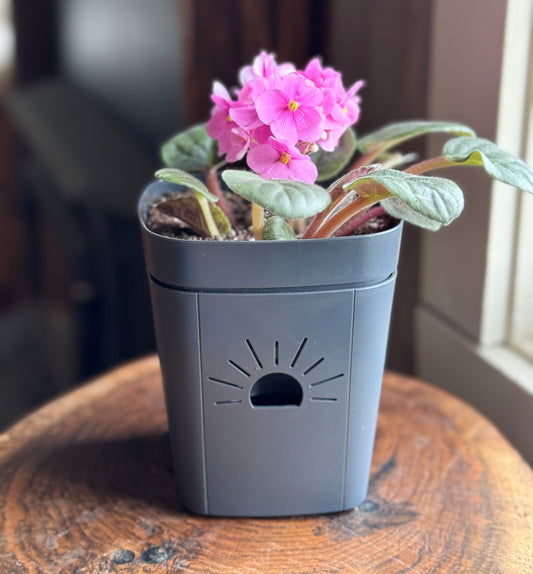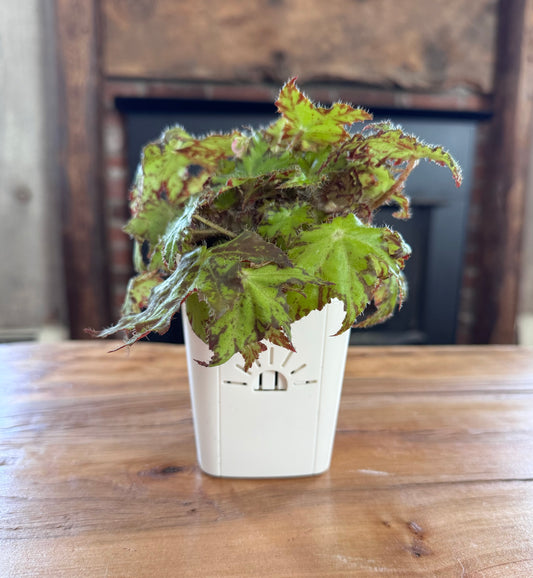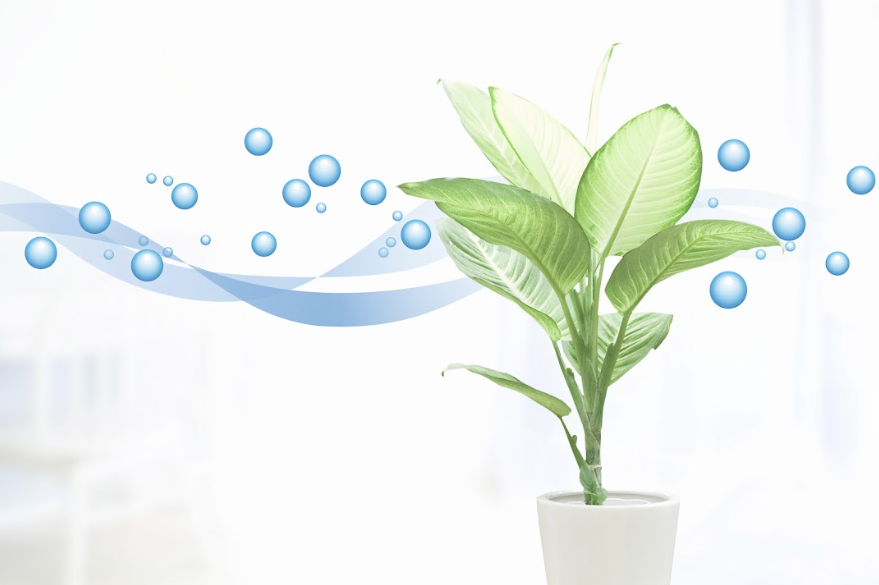Origins
Bromeliads are native to tropical and subtropical regions. One species grows in Africa. The others are spread throughout rainforests and deserts. You can find them in Chile, Columbia, Peru, and the Southern United States, among other places.
Humans have been cultivating bromeliads for thousands of years. We can see ancient writings and fossil records of Incas, Mayans, and Aztecs using bromeliads for food, plant fiber, and ceremonies.
Europeans discovered these lovely plants after Spanish travelers brought pineapples back from their trips. In paintings from the 1700s bromeliad is a popular still-life image.
Light
Requirements
Bromeliads thrive in bright indirect light when grown indoors. If grown outside, they can handle only the morning sun. The afternoon sunlight is too harsh for most varieties and can damage the leaves and cause the color to fade out of the plant.
A few species of Bromeliads can handle more direct light (puya and pitcairnia), but even they like to be shaded in the hottest part of the day.
Genus Summary
| GENUS | Bromeliad |
| COMMON NAMES | Zebra plant, Bromeliad. |
| LIGHT | Bright, indirect |
| WATER SCHEDULE | 14 days |
| WATER REQUIREMENTS | Keep the soil evenly moist but not soggy. |
| HUMIDITY | Medium - 40-60 percent |
| TEMPERATURE | 60-80°F |
| FEEDING | 1x month |
| TOXICITY | Non-toxic to humans and animals |
| PESTS | Few, rarely mealybugs or aphids |
| DISEASES | Root Rot fungi |
| POT | Maximum drainage and aeration to avoid fungi overgrowth |
| SOIL | Bromeliad mix, orchid or cactus mix |
| FERTILIZER | Diliuted, infrequently |
| PROPAGATION | Via offsets, pups |
| PRUNING | Remove spent flowers and dead leaves |
| SIZE | Smallest 1 inch. Largest 13 feet |
Water Requirements
If growing bromeliads in a Naked Root planter, you can follow a 14-day watering schedule. Pour water into the leaf well by watering from above and letting the water cascade down the leaves. Remember that the plant will store water in its leaves, and soil moisture level isn’t always the best way to tell when they need water. This quirk makes an air root pruning container, like Naked Root, the ideal vessel for a bromeliad.
It is a bit more complicated if you are growing a bromeliad in a traditional pot. Overwatering is the number one cause of death for bromeliad plants grown indoors. It is important to keep the leaf well filled with distilled water or rainwater and drained out at least once a week. If the weather is hot or the humidity is low, it may require additional watering, but make sure to let the leaf well dry out before adding more water. Also, remember to clean the well frequently.
Epiphytic bromeliads (like tillandsia air plants) can be placed in a bowl of water for 20 minutes once every 14 days.
Humidity
Medium to High. Most bromeliads are happy with the standard indoor humidity levels of 40-60 percent. If your home humidity is below 40 percent, place your bromeliad next to a plant humidifier and away from ventilation ducts or air conditioners.
Temperature
The average indoor temperatures of 60-80°F are perfect for an indoor bromeliad. There are hardy types that can be grown outdoors at as low as 20 degrees Fahrenheit.
Toxicity
Bromeliads are non-toxic to humans and animals. Rarely will a person have an allergic reaction to a bromeliad plant, but that is not common, as the plants are often spiky, pokey, and difficult to ingest.
Pests and Diseases
Good news! Most pests don’t bother bromeliads. Once in a while, mealybugs will pose an issue. If so, rubbing alcohol on a cotton swab will do the trick. Rarely, you may see an aphid problem, but that is more common outdoors. If you see aphids, neem oil or insecticidal soap will wash them off.
In the southern United States, watch out for the Mexican bromeliad weevil if growing bromeliads outdoors.
The most common disease to plague bromeliads is root rot. When overwatered, the soggy soil is the perfect home for fungi to grow. Those fungi feed on the plant roots and cause them to disintegrate and turn into mush. This method is the most common way to kill a bromeliad.
Pot
A pot that has excellent drainage and air circulation is a must to avoid root rot. Also, do not select a container that is too large. Bromeliads only need a pot one or two inches larger than their root ball. Too much space and the extra soil will collect water and become a home to root rotting fungi.
Soil
Water drainage is essential for any bromeliad. There are specific soil mixes made for terrestrial bromeliads, but if you don’t have access to one, you can use an orchid or cactus mix. It is important to note that these plants typically store their own water or draw it from the surrounding environment – they don’t usually thrive in soils that hold a lot of moisture.
For varieties with grabbing roots, they prefer to be grown in a dry, rock-like material such as perlite instead of a bromeliad mix. Wood bark chips are also a visually appealing option.
For air plants, the best soil is a layer of dry sand or pea gravel.
Fertilizer
Bromeliads usually prefer a diluted fertilizer that is relatively weak. There are specific mixtures designed for bromeliads that are ideal for use. If you don’t have access to these, you can use a general liquid houseplant fertilizer. However, it should be watered down to half strength and applied every month or two. You can make compost tea, but even that can be too strong, so be sure to water it down heavily. Air plants usually do not need much fertilizing at all.
Propagation
Bromeliads are fun houseplants because they produce pups! After the parent plant has finished flowering, it generates a tiny secondary plant at the base. When the pups grow to be about a quarter or a third the size of the parent plant, you can separate them for replanting in their own container.
You are also welcome to allow them to grow in a large group without separating. Please be advised that the parent plant will eventually fade and die and must be pulled or cut out of the arrangement.
Pruning
Bromeliads only grow one flower in their lifetime. Eventually, that flower will turn brown and wither. Your job is to trim off the dead flower with sterilized and sharp shears or scissors. You may also consider trimming some of the parent plants’ leaves, as this can encourage the growth of pups. Do not trim the pups’ leaves.
Air plants don’t need to be pruned unless the tips of the leaves are brown or dry. Sometimes the oldest leaves of an air plant will die and fall off. You can pinch those off with clean hands if they are bothering you.
10 Striking Varieties and Cultivars
- Aechmea chantinii – Amazonian zebra plant is native to tropical rainforests in South America. It is often grown as an indoor ornamental plant because of its striking gray, white, and yellow striped foliage. It grows 30 inches tall and produces a flower in red and blazing orange.
- Aechmea ‘Bert’ – This hybrid cross is tolerant of lower light than some other varieties. It has strong roots that will cling to a wall or a piece of wood, making the mounting options endless. Bert has lime green leaves that are taller in the middle than around the outside. They have a maroon pattern that is mesmerizing. The flower is fluorescent yellow and red.
- Alcantarea ‘Merlot’ – This lovely bromeliad comes from Hawaii and has deep wine-colored leaves that grow up to 4 feet tall and nearly as wide. This variety needs medium indirect light, so an east or west window will suffice.
- Ananus Cosomus ‘Bitter Chocolate’ – This variegated bromeliad has thin strappy leaves that are red in the center and green along the edges, with deep chocolate veining throughout. It is a compact variety, usually 18 inches indoors and 36 inches outdoors.
- Androlepis ‘Paradise’ – This bromeliad is tolerant of brighter light than some other varieties and can be planted indoors or outdoors in the morning sunlight. It is quite drought tolerant, so err on the side of underwatering. The leaves are green with peach and orange highlights that get darker toward the tip of the leaf. Outdoors it can grow up to five feet tall and wide. Indoors it stays 24″ on average. The bloom is bright pinkish-purple.
- Billbergia ‘Darth Vader’ – This is one of the most popular bromeliads and for a good reason. The nearly black leaves with silver stripes are so exotic to see in the plant world! It also has blotchy patterns in green and purple that grow in unusual patterns. This plant needs medium, indirect sunlight and grows 18′ tall. The flower is a bright green spike with a dark purple flower.
- Cryptanthus ‘Elaine’ – This bromeliad is nicknamed earth stars because of its ruffly-edged leaves and star-shaped growth pattern. The leaves are pink with purple-brown stripes down the center of each leaf. They have horizontal stripes of white running the entire length of each leaf. This plant grows to 14′ and is not drought tolerant.
- Guzmania ‘Denise’ – This is one of the most common bromeliads found in a garden center. The bright green and white striped foliage and bright red flower are cheerful, and the plant is easy to grow indoors. It reaches 18′ tall and equally wide, producing multiple pups per plant.
- Neoregelia Carcharodon ‘Spines’ – This cultivar is named for the sharp spikes that grow all along the leaf edges. The leaves are broad and grow in a tight rosette that holds water well. When grown in bright indirect light, each green leaf will blush with pink, and the spines will turn purple. If grown in full shade, it will remain lime green throughout. This bromeliad grows 24 inches tall and wide.
- Tillandsia ‘Rubra’ – This air plant from Guatemala has a gray-green base that turns pink and grows red as you move toward the leaf tip. The flowers are brilliant purple with long yellow stamens. It is only two inches long but makes quite a colorful statement when grown mounted on wood or gravel.
Summary of Bromeliad Plant Care
Bromeliads are easy-to-care-for flowering plants that need bright indirect light, maximum drainage and airflow, and minimal fertilization. They are susceptible to very few pests or diseases and come in an intoxicating variety of leaf and flower colors.





 Verified Buyer
Verified Buyer









